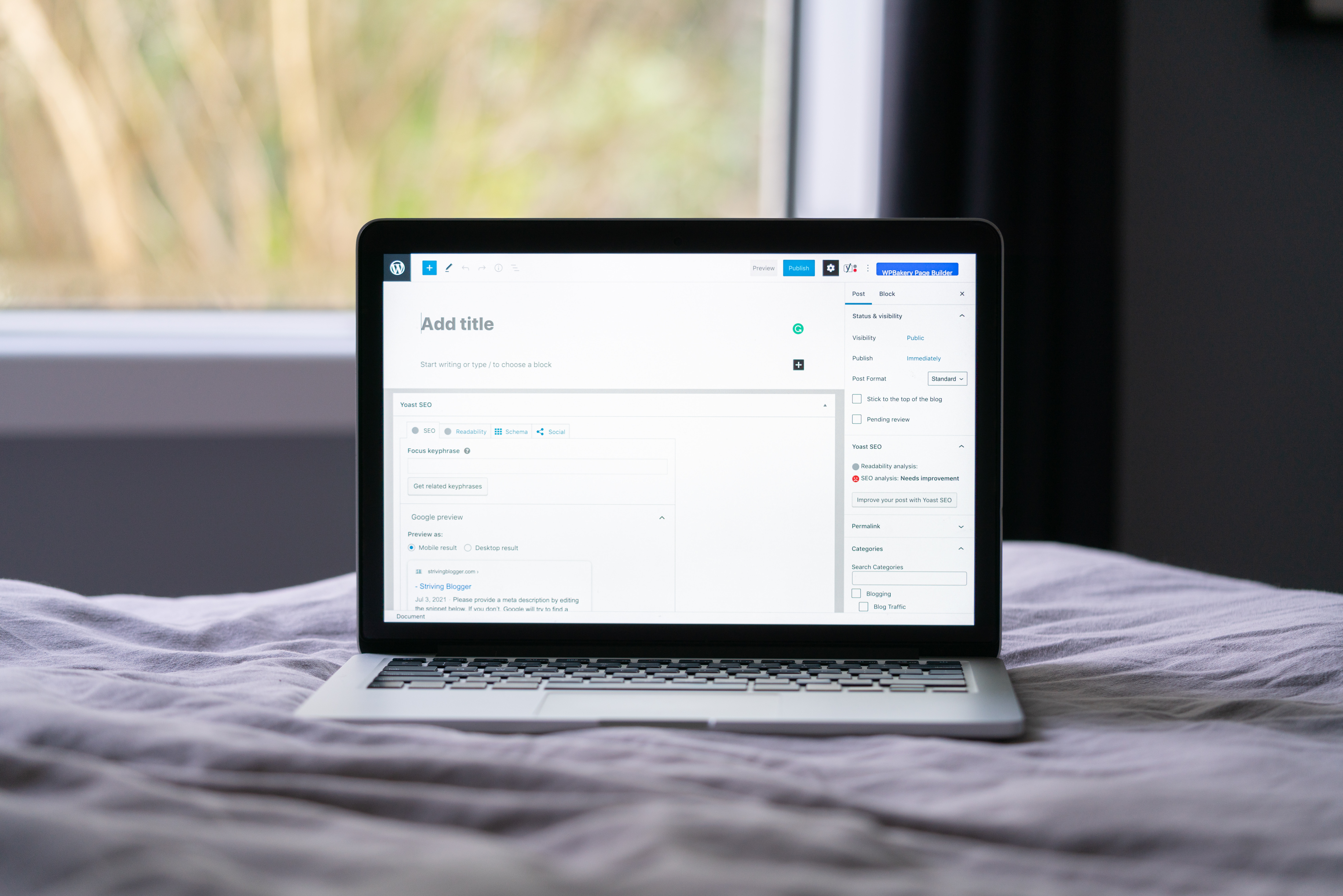How to redirect a WordPress site
7 min read
Have you ever clicked on a link only to end up on an error page or an outdated piece of content? It’s not only annoying for users but also detrimental for businesses trying to maintain their online presence. Luckily, there’s a simple solution: WP 301 Redirects! In this comprehensive guide, we’ll walk you through everything you need to know about redirecting your WordPress site using this powerful plugin. From understanding the different types of redirects to implementing them correctly, we’ve got you covered. So buckle up as we embark on a journey towards creating seamless transitions for your website visitors!
Understanding the importance of site redirects
Redirects are a vital part of managing your website’s traffic and ensuring a seamless user experience. When implemented correctly, redirects can have a significant impact on your site’s search engine optimization (SEO) rankings and overall performance.
One important reason to understand the importance of site redirects is to maintain good customer relationships. If you move or remove content without redirecting the old URLs, visitors may encounter 404 errors, which can be frustrating and lead them to leave your site altogether. By using redirects, you can guide users to relevant pages and help them find the information they’re looking for.
Another aspect to consider is the impact of redirects on SEO efforts. When a page with high authority gains organic links over time, it helps build credibility in search engine algorithms. However, if you change the URL structure or delete that page without implementing redirects, all those valuable backlinks will go to waste. With proper redirection strategies in place, you can preserve link equity and ensure that your website continues to rank well in search results.
In conclusion, understanding the importance of site redirects is crucial for maintaining positive user experiences, preserving valuable backlinks, and ultimately improving your website’s visibility in search engines. By utilizing tools like WP 301 Redirects for redirect management within WordPress sites, you’ll have control over how traffic flows throughout your website while preventing potential errors from occurring.

What is a 301 redirect?
A 301 redirect is a powerful tool in the world of website management and search engine optimization. It is an HTTP status code that tells search engines and web browsers that a webpage has permanently moved to another location. In simple terms, it redirects traffic from an old URL to a new one, ensuring that visitors are seamlessly directed to the correct webpage.
One key benefit of using a 301 redirect is preserving SEO value. When you change or delete a page on your website without implementing a redirect, all the existing links pointing to that page will be broken. This can have negative effects on your website’s performance in search engine rankings and overall visibility. By setting up a 301 redirect, you automatically route those incoming links and preserve the link equity, passing it along to the new destination page.
In addition to preserving SEO value, 301 redirects also improve user experience by minimizing broken or outdated links. Visitors who click on an old link will be redirected to the new URL seamlessly, without encountering any errors or dead ends. This helps maintain positive user engagement and prevents frustration among site visitors who may not even realize they were trying to access outdated content.
Overall, understanding how to properly implement 301 redirects can greatly enhance your website’s performance on both technical and user-friendly fronts. By maintaining SEO value and providing seamless redirection for users, these redirects play a crucial role in optimizing websites for both search engines and human visitors alike.
Why use WP 301 Redirects plugin?
The WP 301 Redirects plugin is an essential tool for website owners who want to ensure smooth redirection of their webpages. One of its key advantages is convenience. With this plugin, you don’t need to manually edit your .htaccess file or write complex code to set up redirects. Instead, you can simply install the plugin and use its intuitive interface to easily create and manage 301 redirects.
Another reason to choose the WP 301 Redirects plugin is its performance. As a dedicated redirect solution, it offers optimized functionality specifically designed for handling redirects. This means that when a user accesses an old URL that has been redirected using this plugin, they will experience minimal delay or disruption as the redirect occurs seamlessly in the background.
Furthermore, the WP 301 Redirects plugin provides valuable insights with its built-in tracking feature. You can monitor how many times each redirect has been used, allowing you to make informed decisions about whether certain redirects are still necessary or if there are patterns suggesting a need for additional redirects.
Overall, by choosing to use the WP 301 Redirects plugin, website owners can save time and effort while ensuring their visitors have a smooth browsing experience without encountering broken links or outdated URLs.

Step-by-step guide to installing and activating the plugin
Installing and activating a plugin in WordPress is a relatively simple process that can greatly enhance the functionality of your website. In this step-by-step guide, we will walk you through the process.
Step 1: Log in to your WordPress dashboard and navigate to the Plugins section on the left-hand sidebar.
Step 2: Click on Add New and search for the desired plugin by name or keyword. Once you find it, click on Install Now.
Step 3: After installation, click on Activate to activate the plugin. Some plugins may require additional setup or configuration, so be sure to read any instructions or documentation provided by the developer.
By following these simple steps, you can easily install and activate plugins in WordPress. Remember to choose reputable plugins from trusted sources and regularly update them for optimal performance and security. With just a few clicks, you can unlock a world of possibilities for your website’s functionality and customization options with plugins.
Setting up and configuring redirects in WordPress
Setting up and configuring redirects in WordPress may seem daunting at first, but with the right tools, it can be a seamless process. One popular plugin that simplifies the task is WP 301 Redirects. This plugin not only allows you to easily create redirects, but also provides valuable data on the number of times each redirect was used, helping you better understand your website’s traffic patterns.
One thing to keep in mind when setting up redirects is to prioritize consistency and clarity. Ensure that each redirect accurately reflects the old URL it replaces and leads visitors to the correct destination. Additionally, leveraging best practices such as using 301 permanent redirects instead of temporary ones can help maintain search engine rankings and ensure a smooth transition for your site visitors.
Configuring redirects in WordPress gives you the opportunity to optimize your website’s user experience while avoiding broken links or lost traffic. By analyzing your site’s analytics data, you can identify pages with high traffic or backlinks that might have been changed or removed. Implementing appropriate redirects for these pages will not only retain valuable traffic but also enhance overall SEO performance for your WordPress site.
In conclusion, setting up and configuring redirects in WordPress doesn’t have to be overwhelming or complicated. With plugins like WP 301 Redirects at your disposal, you can easily create effective redirects while gaining insights into how they are being utilized by your audience. By prioritizing consistency and clarity throughout this process, you’ll ensure a better user experience while maintaining search engine rankings and maximizing organic traffic for your website.

Testing and troubleshooting your redirected site
It’s not uncommon for things to go awry when setting up redirects on your WordPress site. While the process may seem straightforward, it’s important to thoroughly test and troubleshoot your redirects to ensure a smooth transition for your visitors. One of the most common issues you may encounter is redirect loops, where two or more pages continuously redirect you back and forth. To identify and resolve this problem, you can use browser developer tools to inspect network traffic and see how the redirects are being handled.
Another aspect that requires careful attention is checking for broken links after implementing redirects. As you redirect old URLs to new ones, make sure to update any internal or external links pointing to those old URLs as well. Otherwise, visitors clicking on those broken links will be greeted with 404 errors instead of being redirected correctly. A thorough scan of your site using tools like Screaming Frog or Broken Link Checker can help uncover any overlooked broken links.
Additionally, it’s crucial to test how different devices and browsers handle your redirects. Just because they work smoothly on one device doesn’t guarantee they’ll perform flawlessly across all platforms. Utilize multiple browsers (such as Google Chrome, Mozilla Firefox, Safari) along with various devices (desktops/laptops, mobile phones) to verify that all users have a consistent experience regardless of their setup.
Conclusion: Enhancing user experience with seamless redirects
In conclusion, the use of seamless redirects can greatly enhance the overall user experience on your website. By redirecting users smoothly from outdated or nonexistent pages to relevant and updated content, you are ensuring that they remain engaged and satisfied with their browsing experience.
Seamless redirects also play a crucial role in improving search engine optimization (SEO) efforts. When search engines encounter broken links or pages that no longer exist, this can negatively impact your website’s rankings. By implementing proper redirects, you are effectively directing both users and search engines to the correct page, which can significantly improve your website’s visibility and organic traffic.
Moreover, seamless redirects provide a sense of professionalism and credibility to your brand. When users encounter broken links or dead-end pages on a website, it leaves a negative impression and raises questions about the trustworthiness of the site. On the other hand, smooth redirections indicate that you value user experience and have taken proactive steps to ensure a seamless journey for visitors.
By utilizing tools like WP 301 Redirects plugin for WordPress sites, you can easily implement these redirect strategies without compromising your website’s performance or usability. Ultimately, by enhancing user experience through seamless redirects, you are creating a positive impression for visitors while maintaining strong SEO practices – an essential combination for any successful online presence.



